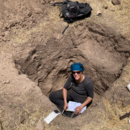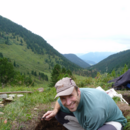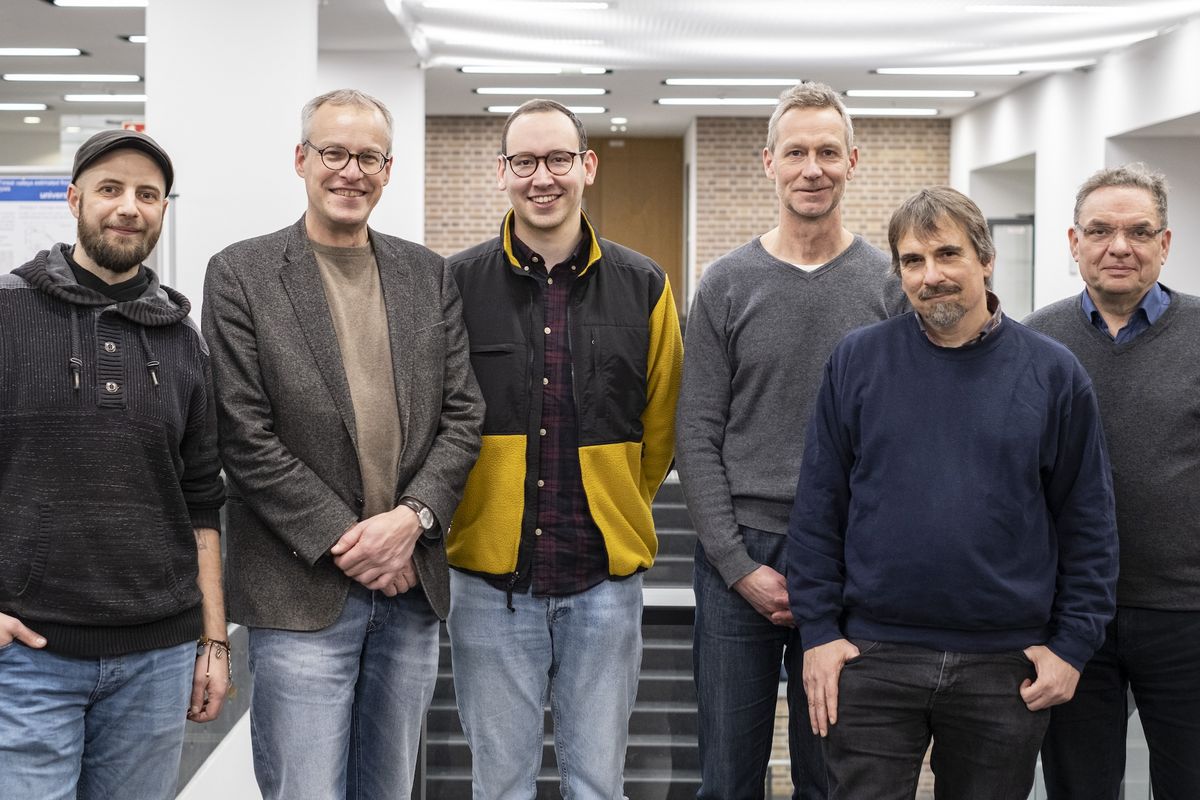Wiesent: Evolution of a human-dominated floodplain system: The Wiesent River System in the Northern Franconian Alb (Main catchment) in Early Middle Ages to Early Modern times
Riverine landscapes - sensitive ecosystems
Riverine landscapes and their associated floodplains are sensitive ecosystems and represent significant economic areas for humans. These landscapes are dynamic by nature and characterised by socio-environmental changes throughout history. In Central Europe, rivers and their floodplains have been subject to a direct (e.g. hydrotechnical installations) and indirect (e.g. sedimentation rate) transformation process especially since the Early Middle Ages. During this period, the direct socio-economic pressure on riverine landscapes became noticeable, with increased settlement and infrastructure activities, such as the establishment of water mills, the opening of valleys and floodplains for transportation on the river as well as on roads along the valleys and the intensification of the agricultural land use of floodplains. At the same time, agricultural intensification expanded throughout the fluvial catchment, causing soil erosion and therefore having a strong impact on the sediment load of the rivers, which significantly changed the floodplains’ morphology.
In consequence, at latest during the Middle Ages, natural dominated floodplains and ecosystems converted to dominant human floodplain systems. This transformation process was not unidirectional, but characterized by non-linear and complex feedback and adaptation processes, defining the human – environment interaction. In consequence, direct and indirect anthropogenic processes modified the floodplain, and vice versa, the modifying floodplain has had impacts on societies.
Major Aims
The project will focus on two main aspects:
- Human activities such as hydrotechnical installations, riverine and agricultural economy and their impact on the fluvial morphology, sediment flux and ecology of the floodplain environment, and
- social response and cultural adaptation to human induced changing floodplain environment.
Specifically, the following questions will be addressed:
- What was the extent of change within the valleys and floodplains?
- Is it possible to identify periods of intensified change?
- Which socio-ecological processes were responsible for the transformation from natural to anthropogenic dominated rivers and their floodplains?
Methodological Approach
Following a diachronically approach, the period from the Middle Ages until the Industrial Revolution will be investigated. As model region for this study, the mesoscale Wiesent River catchment (Main/Rhine catchment) and its tributaries of the Northern Franconian Alb in Bavaria/Germany is chosen. Here, high-resolution chronostratigraphical data on sediment fluxes and floodplain development are already available, a prerequisite to successfully follow the diachronic approach to disentangle the complex human – environment interaction.
To this end, both classical and innovative (semi-)quantitative methods such as phytolith analyses are applied in close cooperation between the applicants from the field of archaeology, historical geography and geomorphology/geoarchaeology.
Publikationen
Publications:
2024 SCHMIDT, J., VOIGT, A., SEEBURG, V. et al. (2024): Georeferencing and other strategies to spatialise information from old maps / Georeferenzierung und andere Strategien zur Verräumlichung von Informationen aus Altkarten. DAI. doi.org/10.34780/8XZW-GF31
Presentations, Posters, Conference Papers:
2023 GRIMM, B., DIX, A., SCHREG, R. & FUCHS, M. (2023): Evolution of a human-dominated floodplain system: The Wiesent River in the Northern Franconian Alb (Main catchment) in Early Middle Ages to Early Modern times. – 18thannual conference of the AK Geoarchäologie/40th annual conference of the AG Paläopedologie in Würzburg, 01–03 June – Poster
2023 GRIMM, B., DIX, A., SCHREG, R. & FUCHS, M. (2023): Evolution of a human-dominated floodplain system: The Wiesent River in the Northern Franconian Alb (Main catchment) in Early Middle Ages to Early Modern times. – 17th International Young Geomorphologists Meeting in Berlin-Wannsee, 09–12 June – Poster
2023 VOIGT, A., GRIMM, B., DIX, A., SCHREG, R. & FUCHS, M. (2023): Entwicklung eines vom Menschen geprägten Auensystems: Das Wiesenttal auf der nördlichen Frankenalb. – Workshop discussion of the IADK Bamberg, winter semester 2023/24, 21 July – Talk
2023 GRIMM, B., VOIGT, A., MÄCHTLE, B., PROFE, J., KOLB, T., ROHLS, F., PAULY, N., DIX, A., SCHREG, R. & FUCHS, M. (2023): The fluvial landscape of the Wiesent River (Northern Franconian Alb, Bavaria, Germany) in Early Middle Ages to Early Modern times – change from a nature- to a human-dominated floodplain system? – DGGM Conference in Aachen, 04–06 October – Poster
2023 PROFE, J., GRIMM, B. and FUCHS, M. (2023): The fluvial landscape of the Wiesent River (Northern Franconian Alb, Bavaria, Germany) – taking advantage of the third dimension: reconstructions from point clouds. – DGGM Conference in Aachen, 04–06 October – Poster
2023 GRIMM, B., VOIGT, A., KOLB, T., DIX, A., SCHREG, R. & FUCHS, M. (2023): Holocene floodplain dynamics & human interaction: OSL dating approach. – DLED Conference in Innsbruck, 09–11 November – Poster
2024 GRIMM, B., VOIGT, A., MÄCHTLE, B., PROFE, J., DIX, A., SCHREG, R. & FUCHS, M. (2024): Late Holocene sedimentary floodplain architecture & human interaction of the Wiesent River (Bavaria, SE-Germany). – SPP2361 General Assembly in Leipzig, 17–19 January – Talk
2024 VOIGT, A., GRIMM, B., DIX, A., SCHREG, R. & FUCHS, M. (2024): Evolution of a human-dominated floodplain system: The Wiesent River System in the Northern Franconian Alb (Main catchment) in Early Middle Ages to Early Modern times. – Doctoral Triangle in the History Park Bärnau-Tachov, 12–14 April – Talk
2024 VOIGT, A., SCHREG, R., GRIMM, B., DIX, A. & FUCHS, M. (2024): Entwicklung eines vom Menschen geprägten Auensystems: Das Flusssystem der Wiesent in der Nördlichen Frankenalb (Maineinzugsgebiet) im Frühmittelalter bis zur Frühen Neuzeit. – Archäologie in Ober- und Unterfranken. Conference in Obernburg am Main, 03–05 May – Talk
2024 GRIMM, B., VOIGT, A., MÄCHTLE, B., PROFE, J., DE NEEF, W., DIX, A., SCHREG, R. & FUCHS, M. (2024): Late Holocene sedimentary floodplain architecture & human interaction of the Wiesent River (Bavaria, SE-Germany). – 18th International Young Geomorphologists Meeting in the Black Forest, 23–27 May – Talk
2024 PAULY, N., GRIMM, B., KOLB, T., VOIGT, A. and FUCHS, M. (2024): OSL dating of fluvial deposits of the Wiesent River in the Northern Franconian Alb (Bavaria, Germany) – first insights. – 18th International Young Geomorphologists Meeting in the Black Forest, 23–27 May – Poster
2024 TURTURICI, V., GRIMM, B., VOIGT, A., PAULY, N., PROFE, J. and FUCHS, M. (2024): Sedimentology & lithostratigraphy of fluvial deposits of the Wiesent River (NE-Bavaria, Germany): The Muggendorf site. – 18th International Young Geomorphologists Meeting in the Black Forest, 23–27 May – Poster
2024 GRIMM, B., VOIGT, A., MÄCHTLE, B., PROFE, J., DIX, A., SCHREG, R. & FUCHS, M. (2024): Late Holocene sedimentary floodplain architecture & human interaction of the Wiesent River (Northern Franconian Alb, Bavaria, Germany). – Pangeo-DEUQUA Conference in Salzburg, 23–26 September – Talk
2024 PAULY, N., GRIMM, B. and FUCHS, M. (2024): OSL dating of Holocene fluvial sediments of the Wiesent River in the Northern Franconian Alb (Bavaria, Germany). – Pangeo-DEUQUA Conference in Salzburg, 23–26 September – Poster
2024 GRIMM, B., VOIGT, A., MÄCHTLE, B., PROFE, J., DIX, A., SCHREG, R. & FUCHS, M. (2024): Reconstruction of the Holocene floodplain environment of a mesoscale fluvial catchment: The Wiesent river in Franconia, NE Bavaria / Germany. – DGGM Conference in Leipzig, 09–11 October – Talk
2024 GRIMM, B., PAULY, N., KOLB, T. & FUCHS, M. (2024): Late Holocene sediment dynamics in a human-dominated floodplain system in NE-Bavaria (Germany) – preliminary OSL-dating results. – DLED Conference in Jelenia Góra (Poland), 24–26 October – Poster
2024 VOIGT, A., GRIMM, B., SCHREG, R., DIX, A. & FUCHS, M. (2024): Entwicklung eines vom Menschen geprägten Auensystems: Das Flusssystem der Wiesent in der Nördlichen Frankenalb (Maineinzugsgebiet) im Frühmittelalter bis zur Frühen Neuzeit. – Advanced Seminar of the ZeMaS at the University of Bamberg, 25 November – Talk
2025 Grimm, B., Voigt, A., Dix, A., Schreg, R., Kolb, T., Pauly, N., Fuchs, M. (2025): Sediment dynamics as a proxy for anthropogenic activity: The Wiesent River Project (NE-Bavaria) – SPP2361 Annual plenary meeting in Nördlingen, 22-24 January – talk
2025 Voigt, A., Dix, A., Schreg, R., Grimm, B., Fuchs, M. (2025): Toponyms for understanding the landscape. Status report about the investigations in the Northern Franconian Alb – SPP2361 Annual plenary meeting in Nördlingen, 22-24 January – talk
2025 Fuchs, M., Dix, A., Schreg, R., Grimm, B., Voigt, A. (2025): The Wiesent River Project: Upper Franconia / N-Bavaria – SPP2361 Annual plenary meeting in Nördlingen, 22-24 January – talk
2025 Grimm, B., Voigt, A., Dix, A., Schreg, R., Kolb, T., Pauly, N., Profe, J., and Fuchs, M.: From natural- to human-dominated fluvial landscapes: sediment dynamics & anthropogenic interaction of the Wiesent River catchment (NE-Bavaria, Germany), EGU General Assembly 2025, Vienna, Austria, 27 Apr–2 May 2025, EGU25-7934, doi.org/10.5194/egusphere-egu25-7934, 2025 – poster
Miscellaneous:
2023 VOIGT, A., ROLLER, ST. (2023): Introduction to QGIS. – Two-day crash course in the Geographical Information System QGIS in Tübingen, 28–29 November – Course
Completed Theses:
2024 Bachelor thesis by Julian Rörig: “Schwermetallgehalte im Einzugsgebiet der Wiesent im Hinblick auf anthropogene Landnutzung im Mittelalter”
2024 Bachelor thesis by Mira Weller: “Kulturlandschaftliche Relikte der Schäferei in der nördlichen Frankenalb. Eine GIS-basierte Analyse anhand der bayerischen Uraufnahme”
2024 Bachelor thesis by Janina Merz: “Rekonstruktion der Auenlandschaft in der nördlichen Fränkischen Schweiz. Eine geophysikalische und sedimentologische Untersuchung (Bayern, Deutschland)”
Awards:
2023 Poster Award at the 18th annual conference of the AK Geoarchäologie/40th annual conference of the AG Paläopedologie in Würzburg, 01–03 June, awarded to Bastian Grimm for the poster titled: “Evolution of a human-dominated floodplain system: The Wiesent River in the Northern Franconian Alb (Main catchment) in Early Middle Ages to Early Modern times”








